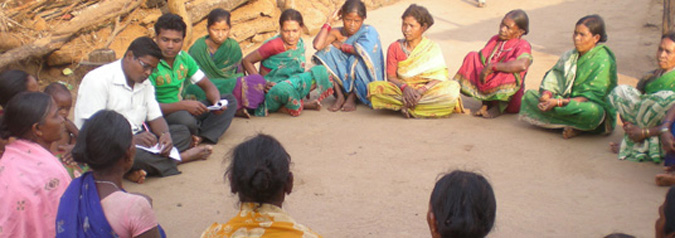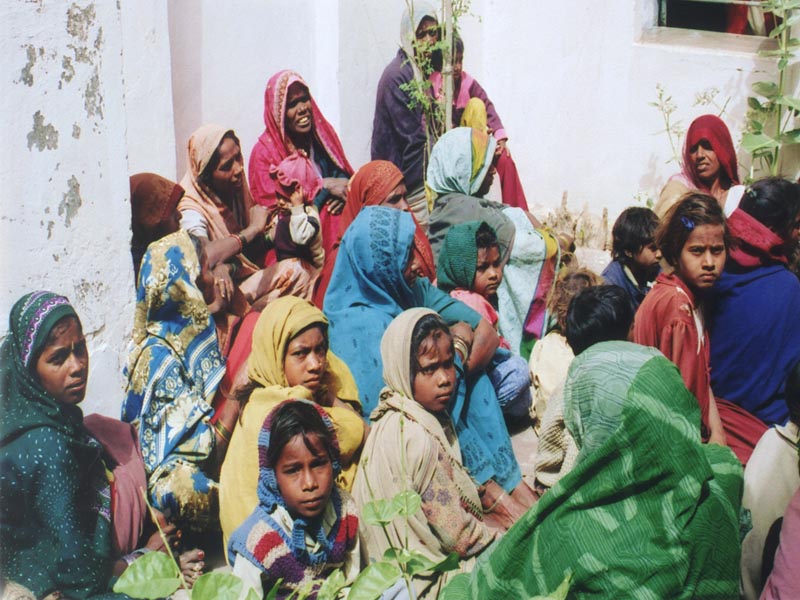
Overview
Thrust Areas
Health interventions were mainly used as an entry point, and provision of curative services was the main emphasis. In addition, health and relief camps in epidemic situations were organized in project areas. A health centre was established in each project site to take care of emergency situations. Priority also had been accorded to improve women’s health status in the community and focus on health promotion by improved communication and developing need- based area specific strategies.
To ensure community participation in the project implementation process, all projects had initiated steps to organize groups at different levels in the project villages. Involvement of the Community helped to increase literacy levels in the community.
Community development was an extremely important area of thrust. Major strategies adopted for community development are capacity building, income generation programmes and education.
Village and Town environment, sanitation and drinking water related activities, prevention of deforestation, preservation of natural resources; kitchen gardens were some of the areas covered by the project.
Activities in various states
The Khoj project was implemented in Chadoora and Khan Sahib blocks of Budgam district reaching the most vulnerable families. Under the project, curatives services were provided, various trainings on health promotion and awareness generation programmes were conducted. The orientation sessions were organized for the field staff for effective implemention of the programme. For economic development of women, income-generation activities were implemented, which will lead them to socio-economic empowerment.
Dzongu is one of the remote areas consisting of 30 small village hamlets located in North Sikkim. Geographically covered with hills, mountains and trenches. As per the Sikkim government notification, Dzongu area is a protected area, imposed due to the backwardness of the inhabitants so as to protect them from exploitation. The Dzongu Khoj project was initiated with the goal to improve the health and economic status of the inhabitants of Dzongu block. The Khoj project in Dzongu focused on optimum utilization and strengthening of the government health infrastructure for long term sustainability through orientation of the PHC & PHSC Staff, MLAs and Board Members, conducting health awareness generation programmes, ensuring economic empowerment of the community through SHG strengthening, group formation and health promotion camps and fairs.
Through an urban project launched in 19 wards in Katwa Municipality, West Bengal, VHAI has worked in locations of Baganipura, Katwapara, Khalpara, Mondaolpara, Faridpur colony and Mathpara for health promotion with the goal to improve health and socio economic status of the people of Katwa town, especially women and underprivileged sections of the project area. Under the project, activities like community health promotion, formation of SHGs, their support and training, school health promotion activities and community medical health check-up camps were organized in the Katwa Municipality.
It is one of the most underdeveloped regions where not much development has taken place in the last 50 years and the area is also prone to different kinds of disasters. The project was one of the model programmes where the issue of poverty were addressed with a right-based approach and the overall development of the community were structured by organizing community level health, livelihood and disaster management initiatives. Activities undertaken were orientation programmes for volunteers on health issues, health promotion activities in schools and community, health promotion programmes in the slums of Bhubaneswar, disaster preparedness initiatives, right-based activities for poor and marginalized community, linkages with other development activities for sustainability of the project and self-help group initiatives for economic empowerment and improvement of the social status of the women members in the community.
It attempts to improve the health and socio-economic status of the people, especially women and underprivileged sections of the project area. The project aims to strengthen the health-related structure of the community organizations to work as more effective change agents, implementers and confluence of backward and forward linkages to ensure the success of health along with development programmes in an integrated manner. The project primarily focused on Health, Community Development and Environmental issues. Thus improving health and socio economic status of the people of 25 villages especially women and underprivileged sections of the project area.

